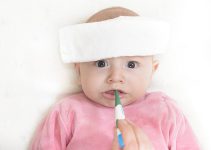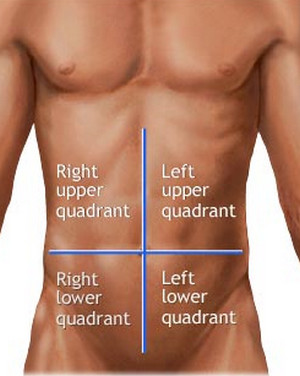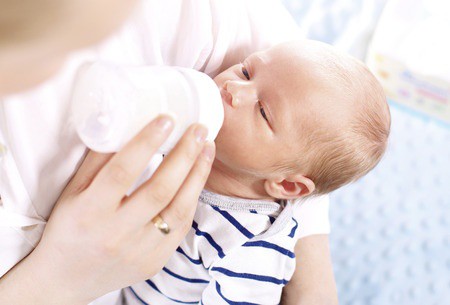Autism is also referred to as Autism Spectrum Disorders (ASD). It includes various presentations of the same condition. Autism is a neuro-developmental disorder affecting children. The signs of autism can be spotted around 18 to 24 months of age. In some children there may be signs in the first few years of life. The main symptoms of autism are abnormal verbal and non verbal communication, poor social interaction and repetitive behaviors. The first symptoms of autism are noticed before the child turns three and this is one of the diagnostic criteria.
The other common presentations of autism are Asperger’s syndrome where the child has above average intelligence. Pervasive Developmental Disorder or PDD is a condition where the child has some symptoms of autism but not all of them. These different presentations are just a finer classification and the symptoms are very close to each other. Gradually all these may be considered under a single diagnosis.
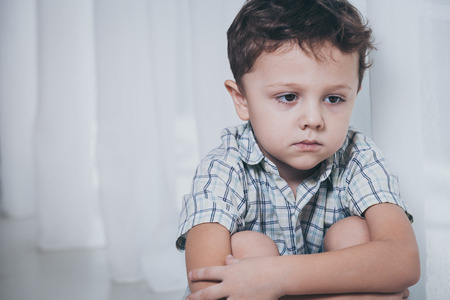
Causes and Pathophysiology of Autism
Neurological disorders like Parkinson’s have a definite pathophysiology where in the underlying cause can be identified at a molecular level. Autism does not have any such definite mechanism. Then what causes autism? Studies have shown that autism is a result of changes in the development of the brain immediately after conception. The changes in the brain are affected and enhanced by environmental factors.
Autism affects various parts of the brain that control emotional behavior and actions. Depending on the part of the brain affected, the predominant symptoms will appear.
- The amygdala is a part of the brain that controls emotional and aggressive behavior
- Cerebellum controls the motor activity, body movements and coordination of muscles used for speaking.
Another important pathology in autistic disorders is the affection of the immune system. In autistic children, the immune system is altered right from embryonic life. Studies have shown that if the pregnant mother is exposed to infections that affect the body’s immunity, the normal brain development of the baby gets disrupted. This is because a healthy immune system is very essential for proper neuro-development.
Symptoms and Signs of Autism
(a) Communication: Defects in communication begin in the first year of life in the form of delayed or no babbling, unresponsiveness and use of gestures to communicate. As the child grows, the words and small sentences do not come. Instead there is only repetition of words or use of random words when you try to strike a conversation with them. These are often the earliest signs of autism in children.
(b) Social Interaction: Autistic children have slow social development in the form of recognition, smiling and reacting to people and surroundings. In school such children are slow in making friends or keeping friends as they find it difficult to express themselves.
(c) Behavior: Children with autism exhibit repetitive behavior like rocking, spinning around etc. They like to do the same things over and over again. This is true for playing, talking or any other activity that they start. Their interests are restricted and they do not feel the need to learn anything new. Many children also have a habit of injuring themselves like picking at the skin, head banging etc.
If you notice a child who has such behavior, it does not mean that the child is autistic. However if the child has autism, these behaviors are exaggerated and very frequent in occurrence.
Diagnosis of Autism
The diagnosis of autism is done mainly on the basis of autism symptoms and not cause or pathology of disease. There are no diagnostic tests, blood tests or scans that can confirm autism. The appearance of the signs can be anywhere between 6 months to 3 years of age. ABA or applied behavior analysis can be useful in such cases. The following are the diagnostic features of autism spectrum disorders.
- Deficient communication
- Difficulty in social interaction
- Repetitive behaviors like spinning around, flapping of hands etc
- Lack of emotional and social reciprocation
- Functional impairment due to which the child cannot do day to day activities like wearing shoes, picking up stuff on his own
- Continuous preoccupation with objects
- Use of language in a way that cannot be understood
- Restricted interests and activities
- Physically the child may grow normally, but there is clear mental growth restriction
Red Flags of Autism
Most of the parents will notice one or more of these red flags by the age of 18 months and few of them will notice it by 24 months. The following red flags if present, mean that the child has to be subjected to further more detailed evaluation to confirm the cause of the developmental delay.
- No use of hand gestures for pointing or waving a bye by 12 months of age
- Absence of babbling even when the child is nearing one year of age
- No use of single words by 16 months
- No two word phrases by 24 months of age
- No eye contact
- Loss of an acquired skill at any age
- In babies, there is no response when their name is called out
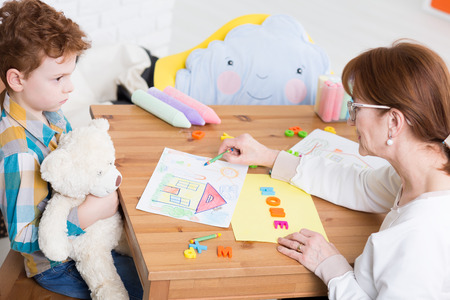
Management of Children with Autism
There are no treatment options for autism or cure of autism as it is a lifelong disease. The main aim of management is to help the child and the family to cope with the situation and be able to perform day to day activities with ease.
Giving the child a lot of one to one time is the most helpful tip. The child should be given a chance to interact with peers who are his age and do not have autism. It can have positive effects on the child. The child should be encouraged and made to feel comfortable at all times. The chance and opportunity should be created for an autistic child to interact with people and participate in games, simple play or even playground activities.
Speech therapy autism and language therapy can help a child who has difficulty in articulating the speech and speaking clearly.
Occupational therapy autism proves beneficial for those children who have only physical disabilities like difficulty in coordinating movements. He will be taught things like dressing up, washing, wearing shoes etc. These minor changes help to boost the confidence of the child greatly.
Provide lots on encouragement at each step or whenever your child achieves a new thing. Special needs autism schools are also a good option to think about.
In some autistic children who are very violent or aggressive (Having ADHD-attention deficit hyperactivity disorder), medications may be required. However these will not be able to cure the problem itself but will make it easier for the caretakers to handle the child. Anti convulsive medication will be given if the child has associated epilepsy.
Alternate therapy and gluten free diet may help the child to some extent. But there are no studies that can prove the efficacy of such therapies.
Counseling sessions for the family and care givers are very important to help them cope and manage the child well. Siblings need to be separately counseled so that they can grow up without feeling ashamed or insecure of their brother or sister.
At home, ensure that the child’s routine is simple and predictable. New routine changes and change of place or surroundings can upset them very easily. Also give them some simple tasks that they can help you with. This feeling of being useful helps to boost their confidence and makes them feel important.

